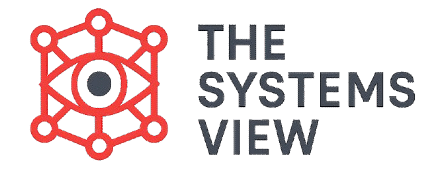What do the communication patterns of dolphins, the behavior of a primitive tribe, and the struggles of a family system have in common? They are all governed by the same rules of control and feedback. The thinker who proved this connection was Gregory Bateson (1904–1980).
Bateson was an anthropologist who became one of the most original and profound figures in Cybernetics. He realized that the human mind and its relationships are not closed, isolated systems; they are constantly communicating and organizing themselves through the flow of information. His goal was to find a unified way of thinking that could be applied across every single discipline, from biology to human psychology.
1. Bateson and the Foundational Idea of Information
Bateson’s greatest contribution to Systems Thinking came through his deep involvement in the Macy Conferences on Cybernetics (1946–1953). These conferences brought together engineers, mathematicians, and social scientists to define the new field.
Information as “The Difference That Makes a Difference”
Bateson provided Systems Thinking with its most famous and profound definition of information. He defined it not as a physical thing or energy, but as “the difference that makes a difference”.
This definition is highly systemic:
- Difference: Information is created by the lack of sameness. For example, the difference between a stoplight being red and being green is information.
- Makes a Difference: This difference must be perceived by a system and trigger a change in its behavior. The difference between red and green causes the car to stop or go.
Bateson showed that what truly matters is not the power of a signal, but the pattern and the relationship it creates. This concept is vital for understanding systems, because it means that ideas and relationships have just as much power as physical forces.
The Map is Not the Territory
Bateson often used the phrase, borrowed from Alfred Korzybski, that “the map is not the territory”.
- The Territory: This is the complex, messy, physical reality of the world.
- The Map: This is the simplified mental model we carry in our heads.
This distinction is key to understanding our own beliefs. Our thoughts (the map) are never the full reality (the territory). Bateson taught that many problems come from confusing the map with the territory and acting on a flawed understanding of the world.
2. The Systemic Roots of Human Conflict and Psychology
Bateson took the technical concepts of feedback and applied them to real-life social and psychological problems, which was revolutionary at the time.
Schismogenesis: Positive Feedback in Society
From his anthropological work in New Guinea, Bateson developed the concept of schismogenesis. This term describes the creation of a split or division that is driven by a positive (reinforcing) feedback loop in a society.
- How it Works: The action of one group encourages the increasing intensity of the opposite action in the other group. The more A does something, the more B does the opposite.
- Example: In a competitive relationship, one person’s bragging increases the other person’s need to prove superiority. This reinforcing loop leads to increasing division and instability in the relationship.
The Double Bind: A Paradoxical Trap
Bateson is famous in psychology for the concept of the double bind. This is a pattern of interaction where a person is trapped by two mutually incompatible demands from a powerful figure (like a parent or boss).
- The Trap: A person receives two conflicting messages at the same time (e.g., “Be independent” but also “Don’t ever leave me”). Crucially, the person cannot comment on the conflict and cannot escape the relationship.
- Impact: Bateson showed that this impossible communication pattern could cause significant psychological distress. His work was a major foundation for the field of family systems therapy, which views mental and emotional problems not as a flaw inside one person, but as a flaw in the entire family’s communication system.
3. The Ecology of Mind
In his later years, Bateson sought to unify all his work into a single vision he called the “ecology of mind”.
He believed that the mind, and the process of thinking, is not limited to what is inside the skin. The mind extends out into the relationships, the systems, and the environment we are part of. Therefore, studying the mind requires studying the environment—the ecology—that contains it.
Important: Gregory Bateson was struggling to develop a single, transferable way of thinking that could be applied across every single discipline. He showed that all systems are governed by the same universal rules of communication and feedback.
Conclusion
Gregory Bateson was a boundary-crossing thinker who was one of the most profound figures in Systems Thinking. His core contribution was establishing that all systems, whether human or machine, are organized by the flow of information and feedback loops. By defining information as “the difference that makes a difference” and by developing concepts like the double bind and schismogenesis, he provided the essential tools to understand how our relationships and communication create the patterns in the world around us.



